December Garden Tips: How to Keep Your Garden Thriving
Gardening in December might seem challenging, but it’s actually a great opportunity to prepare your garden for the cold months ahead and set the stage for a beautiful spring. There are many tasks you can tackle in December to ensure your garden stays healthy and productive. Whether you’re dealing with snow, rain, or mild weather, there’s always something to do in the garden.
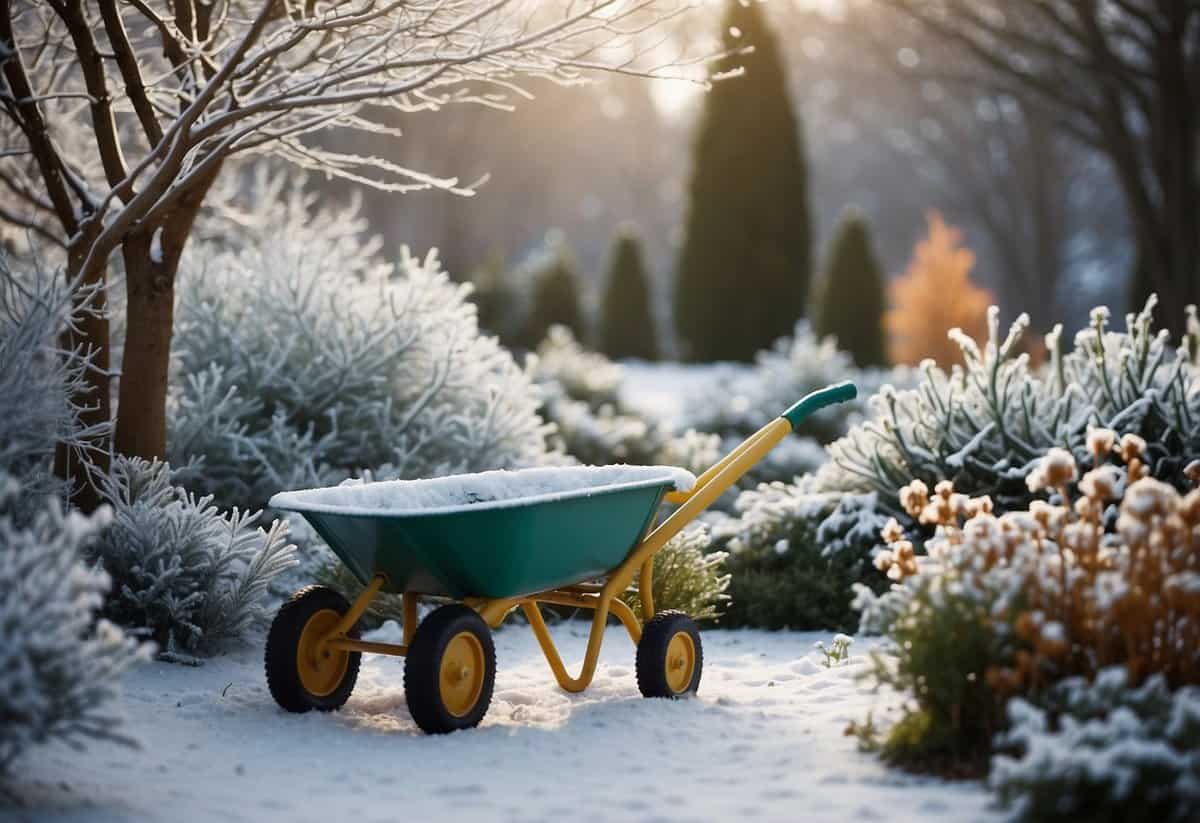
From pruning and protecting your plants to even getting a head start on next season’s growth, December gardening can be both productive and relaxing. Embrace the cooler weather and take the time to nurture your garden, so it remains a vibrant and thriving space, no matter the season.
1) Plant Winter Vegetables

You can still enjoy gardening in December by planting winter vegetables. Some of the best choices include spinach, kale, and Brussels sprouts. These hardy vegetables thrive in cooler temperatures.
Ensure your garden spot gets at least 8 hours of sunlight each day for the best results. For more tips on winter gardening, check out this guide on winter gardening zones 9-11. Enjoy your winter harvest!
2) Prune Dormant Trees

December is the perfect month to prune your dormant trees. This helps improve their health and shape.
Maple, dogwood, apple, and pear trees benefit from pruning now. Focus on creating an open bowl shape. This allows better airflow through the tree.
Prune dead, diseased, or broken branches. This applies to both evergreens and deciduous trees.
For tips on when to prune specific trees, read more at the Old Farmer’s Almanac.
3) Protect Delicate Shrubs
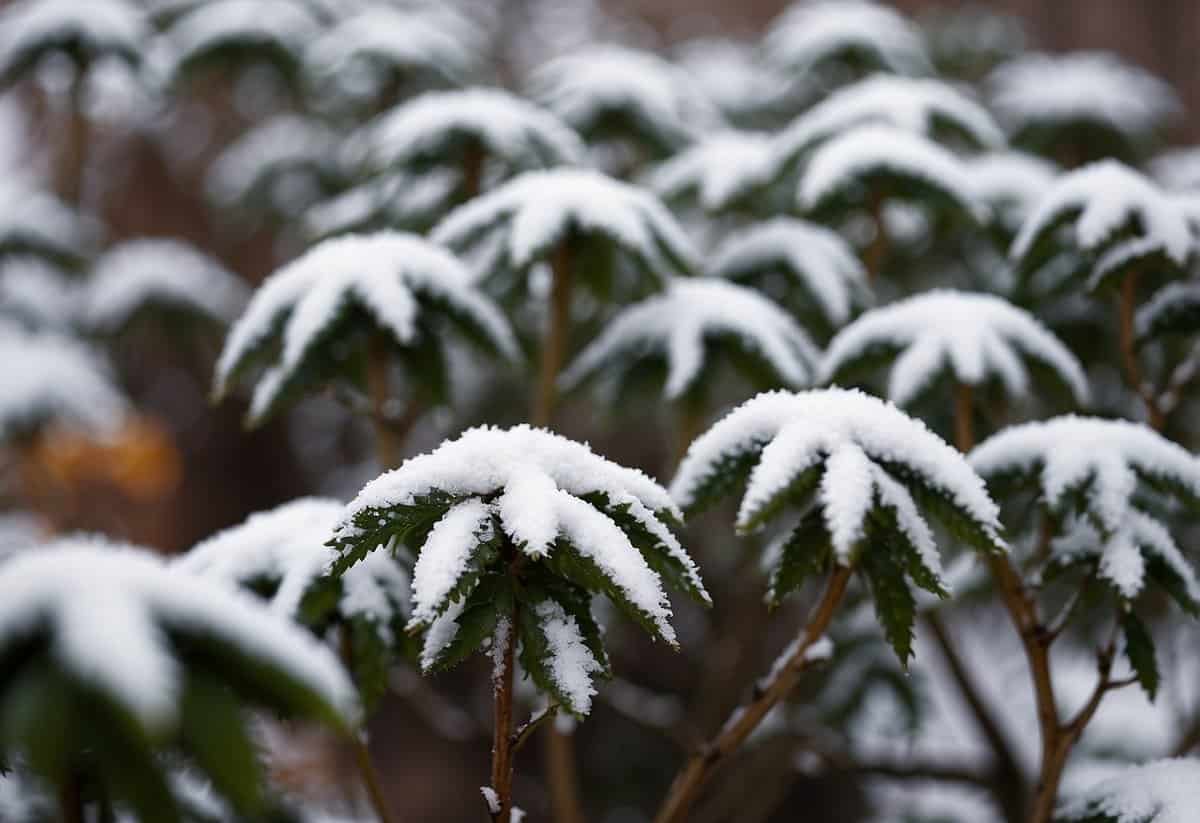
In December, it’s important to safeguard your delicate shrubs from harsh weather. Start by measuring and cutting burlap pieces to wrap around each shrub. Use gardener’s twine to secure the burlap, wrapping from the bottom up.
Ensure your shrubs enter winter with moisture. Properly irrigate them before the first hard freeze hits. You can read more details on how to protect shrubs in winter.
For extra insulation, scoop up snow and place it around the base of your shrubs. This can help shield them from freezing temperatures.
4) Add Mulch to Beds
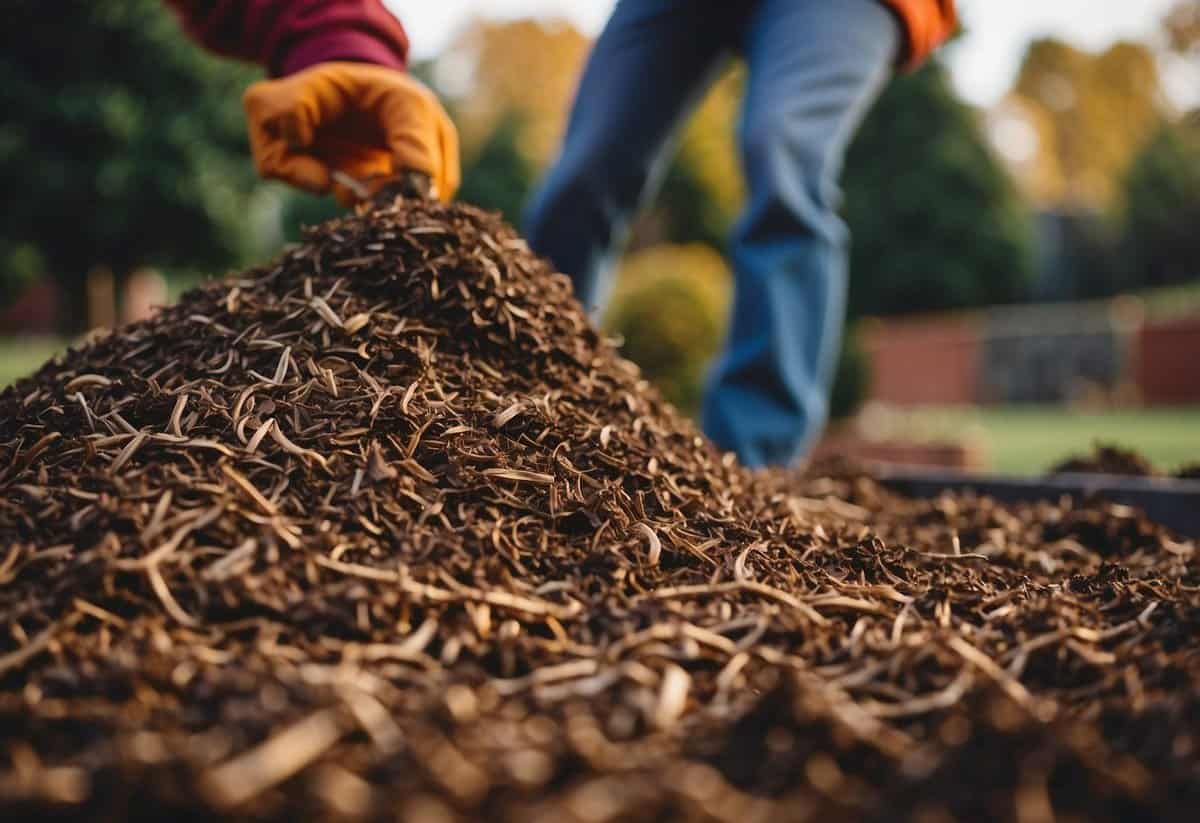
Adding mulch to your garden beds in December helps protect your plants during the winter months. Mulch insulates the soil, keeping it warm and allowing microorganisms to stay active even in cold weather.
You can use different types of mulch like straw, wood chips, or leaves. Each of these will protect the root systems of your perennials. Spread a thick layer to ensure maximum insulation.
For an aesthetic touch, select mulch that complements your home’s exterior. Colored mulch can make your garden beds look great while providing the protection your plants need.
5) Install Cold Frames
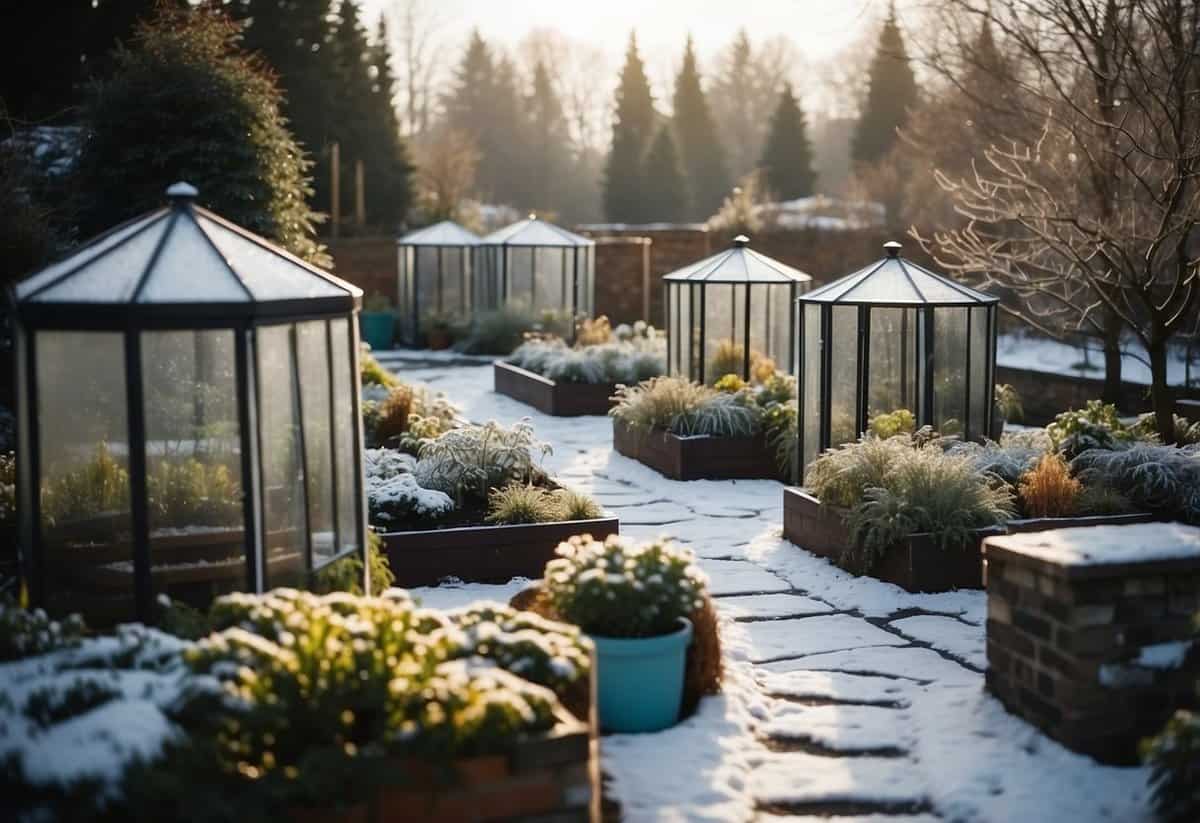
Cold frames are a great way to extend your growing season into the chilly December days. They act like mini-greenhouses, protecting your plants from frost.
You can make cold frames out of materials like plywood and poly sheeting. They keep your crops warm and are perfect for starting seeds early or hardening off seedlings.
In December, cold frames are especially useful. They let you keep growing and enjoying fresh vegetables even when it gets cold. For more tips, check out this beginner’s guide to cold frames.
6) Plan Next Year’s Garden

December is a great time to think about next year’s garden. Start by making notes of what worked well and what didn’t this year.
Look through seed catalogs and online stores to decide what new plants you want to try.
You can also order seeds and plants now to get a head start.
Consider your garden’s layout. Think about where each type of plant will go to maximize space and sunlight.
Remember, planning now can make next year’s gardening easier and more successful.
7) Feed the Birds

Winter can be tough on birds, so helping them out with food is a great idea. Set up feeders near evergreen trees or shrubs for cover.
Use a mix of small seeds, large seeds, and suet. Small seeds like millet and nyjer work well. High-calorie options like sunflower seeds, peanuts, and mealworms are also great.
To make a simple feeder, drill a hole in a coconut shell, tie it with string, and fill it with a mix of lard or suet and bird seed. This can also include cheese, mealworms, and dried fruit for extra nutrition.
This not only feeds birds but makes your garden lively and joyful.
8) Clean and Store Tools

Start by removing any dirt or mud from your garden tools. Use a stiff-bristled brush or steel wool to scrub away grime.
Next, wash the tools with warm, soapy water. Wipe them dry to prevent rust.
Apply oil such as WD-40 to the metal parts. This helps to keep the blades and surfaces rust-free.
Finally, store your tools in a dry place. Keeping them clean and dry will extend their lifespan and make them ready for use when you need them.
9) Check for Pests
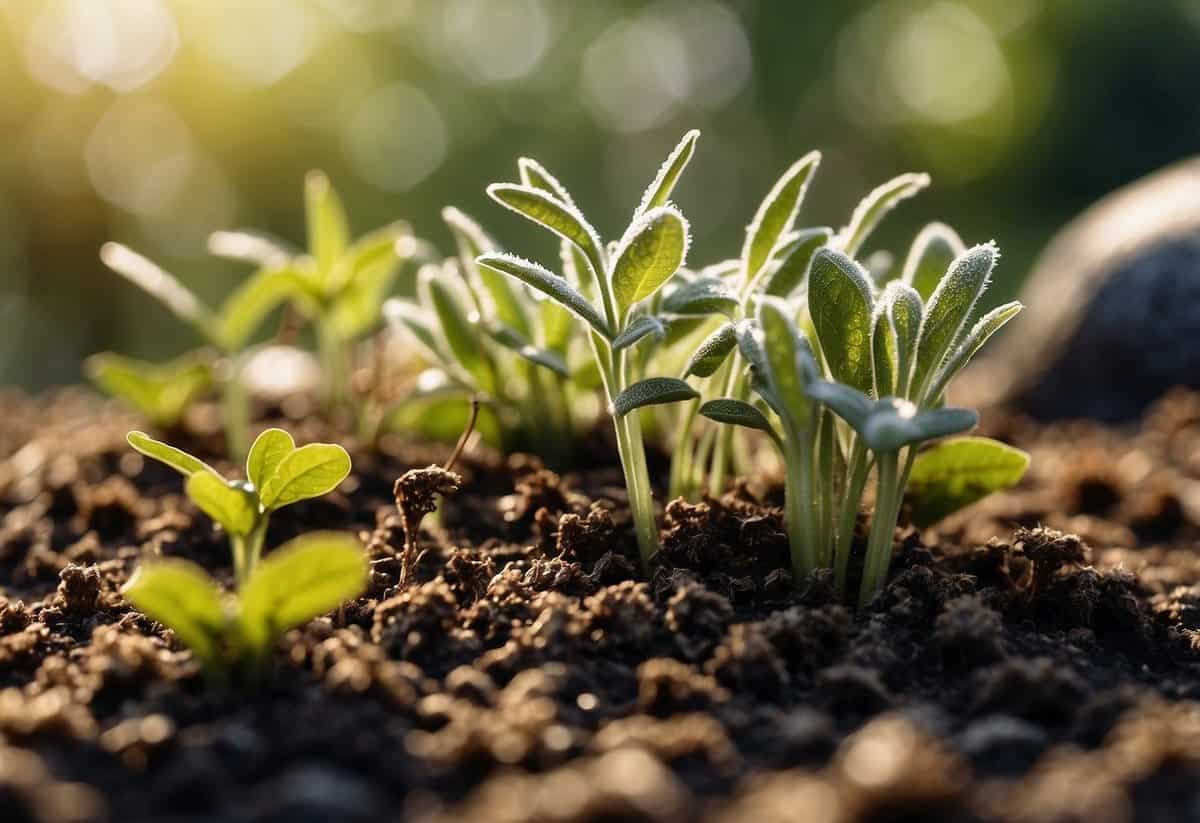
December is a great time to check your garden for pests. Pests can cause a lot of damage to your plants if not dealt with early.
Look under leaves and around the base of plants for signs of insects. Remove any overripe fruits to deter pests like citrus pests from attacking your trees.
Keep an eye on your houseplants as well. Regularly inspect them for common pests and treat them promptly to keep them healthy and vibrant. For more tips, visit gardening tips by region.
10) Start Indoor Herbs
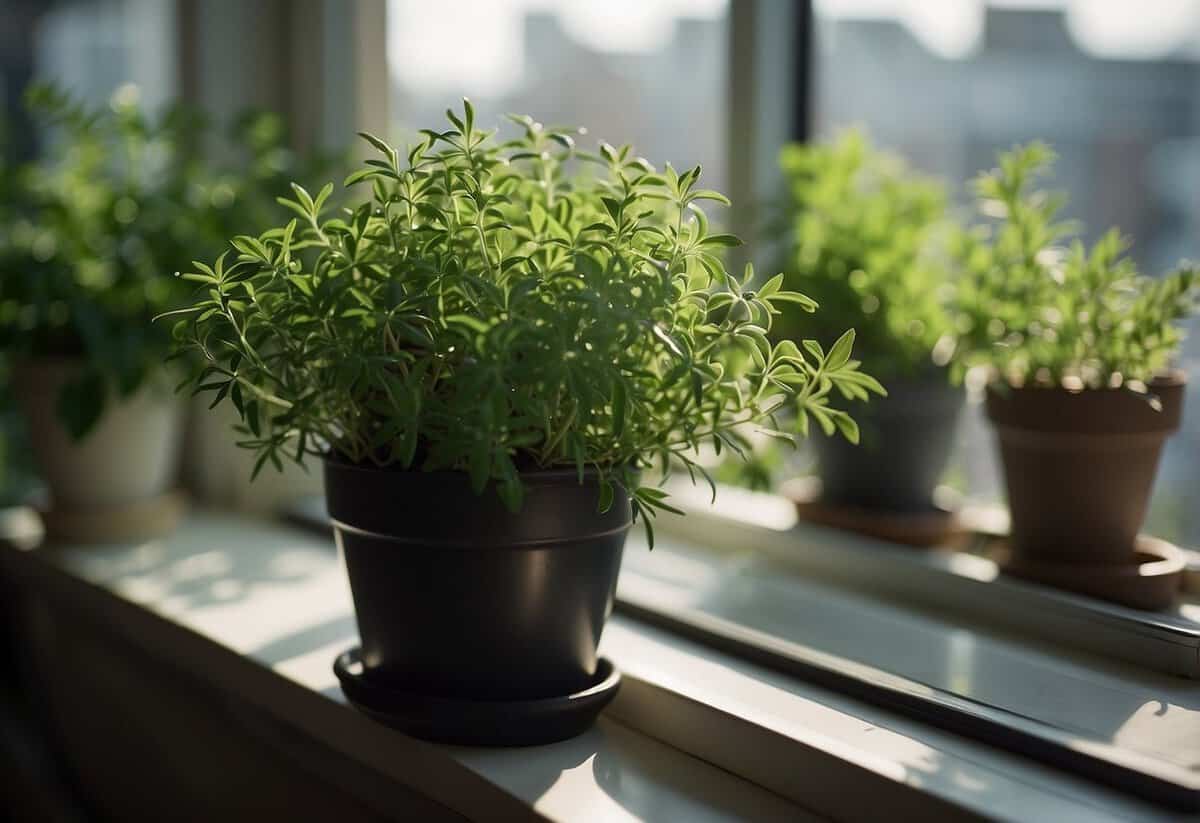
December is a great time to start growing herbs indoors. Find a sunny window, preferably south or southwest-facing, to give your herbs the light they need. If you don’t have enough natural light, use an LED grow light for 12-14 hours daily.
Water your herbs gently. Use a watering can or small-mouthed jar. The soil should be moist, not soggy. Avoid overwatering to prevent root rot.
Choose herbs like basil, chives, and rosemary. These herbs can thrive indoors all winter long. Get started today and enjoy fresh herbs year-round.
Preparing Your December Garden

In December, it’s important to clean up fallen leaves and protect your plants from frost to keep your garden healthy and thriving.
Cleaning Up Fallen Leaves
Leaves that fall in your garden can be both a blessing and a curse. They can provide organic matter to improve soil, but they can also harbor pests and diseases. Begin by raking up the leaves regularly. This helps prevent diseases that thrive in wet, decomposing leaves. You can use a leaf blower for larger areas or a simple rake for smaller spaces.
Set aside the leaves in a compost bin to break down naturally. You can also shred the leaves before composting to speed up the process. If composting, mix them with green materials like vegetable scraps and grass clippings. This balance helps create rich compost for spring planting.
Alternatively, use the leaves as mulch. Spread a thin layer around the base of plants to insulate the soil and regulate moisture. Avoid piling too many leaves against plant stems, as this can cause rot.
Protecting Plants from Frost
December often brings frosty mornings that can damage or kill sensitive plants. To protect your plants, start by keeping an eye on weather forecasts. When frost is expected, cover vulnerable plants with materials like burlap, old sheets, or frost blankets. Make sure the covers reach the ground to trap heat and moisture.
Move potted plants to sheltered areas, like garages or porches. If this isn’t possible, cluster them together and cover them with frost cloths or blankets.
Watering your plants well before a frost can also provide some protection. Moist soil retains heat better than dry soil, which can help reduce frost damage.
Avoid using plastic sheets directly on plants, as this can accumulate condensation and freeze, harming the plants. Always ensure that the covers allow air circulation to prevent mold or mildew buildup.
Planting Winter Vegetables

December brings unique opportunities for gardening, allowing you to grow hardy vegetables and protect them with mulch to ensure a productive harvest.
Best Vegetables to Plant in December
December is perfect for planting cold-hardy vegetables. Garlic is a great choice and can handle snow. Onions and shallots thrive in temperatures as low as 20°F. Broccoli and winter cauliflower also do well in cooler weather. These vegetables can be found mentioned in winter gardening checklists.
Beets, kohlrabi, and celeriac can be planted when temperatures hover around 30°F. Peas and broad beans also perform well, even when the soil is chilly. Curly kale is another option; it’s less likely to be attacked by pests during winter. Check out December garden tips for more ideas.
Tips for Mulching
Mulching is essential for winter vegetable gardens as it helps retain soil moisture, suppress weeds, and keep the soil warm. Apply a 2-4 inch layer of organic mulch, such as straw or shredded leaves, around your vegetables.
Make sure the mulch does not touch the plant stems to prevent rot. Mulching also reduces soil erosion from winter rains. Consider using a heavier mulch in particularly cold areas to offer extra insulation.
During cold spells, you can add more mulch to protect against frost. Regularly check the mulch and replace if it becomes too compacted or decomposed, ensuring your vegetables stay healthy throughout winter.
Maintaining Garden Tools in Winter

Taking care of your garden tools in winter is important. Clean tools work better and can last longer. First, remove all dirt from your tools. Use a coarse metal brush or grill brush to scrape off the dirt and grime.
After brushing, wipe your tools with a dry rag. If there’s rust, use sandpaper to rub it away. Pay special attention to metal parts.
Here are a few steps to keep your tools in top shape:
- Clean thoroughly: Dirt can contain plant diseases, so it’s great to start with completely clean tools.
- Dry completely: Make sure there’s no moisture left to prevent rust.
- Sharpen blades: Sharp tools make gardening easier. Sharpen shears, pruners, and hoes.
Store tools properly to keep them ready for spring. Hang them up or place them neatly in a dry location. Your shed or garage is perfect for this.
Check handles for splinters or cracks. Sand and oil wooden handles to keep them smooth and prevent breaking.
Apply oil to metal parts for rust prevention. You can use any light oil you have at home.
Following these steps helps keep your garden tools ready for spring. You’ll be glad you did when it’s time to dig in once again.







